Stinky, fly-infested pit toilets might someday disappear from America’s campgrounds, thanks to the dietary proclivities of a humble little worm.
Red wiggler worms have a unique talent. They gobble up organic material and turn it into rich topsoil. Some clever folks have harnessed this ability and are building privies as clean as they are green.
The technology, employed in developing countries for almost a decade, has proven a boon to public health. In Ghana, for example, wiggler-powered toilets helped eradicate dracunculiasis, a parasite-generated disease that once afflicted hundreds of thousands. At Camp Creek State Park and Forest in West Virginia, the toilets are giving campers and backpackers the unfamiliar experience of breathing fresh air while visiting a public privy.
“Guests who have used them have made many positive comments about them,” says Frank Ratcliffe, the superintendent at Camp Creek. “Think about that. We don’t usually get positive comments about any kind of restroom facility, let alone outhouses.”
Stephen Mecca, a Providence College physicist, pioneered the toilets’ design when he invented what he calls the “microflush valve.” Conventional toilets use gallons of water for each use; microflush toilets use just 8 ounces.
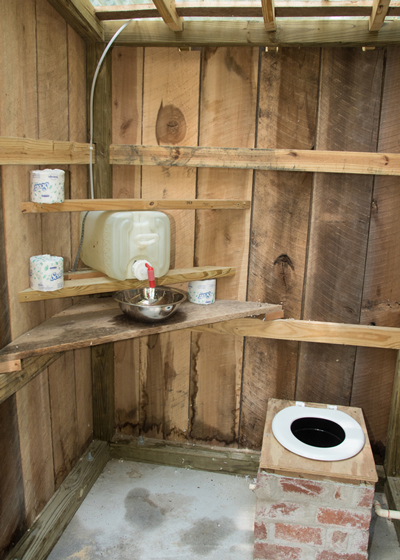
When flushed, liquid and solid waste products in the toilet bowl drop onto a rearward-slanting grate covered with straw, topsoil and oodles of ravenous red wigglers. Liquids filter through the soil and collect in a “soak hole,” a miniature leach field like those used in rural septic systems. Worms devour the solids and, within a week, transform them into fully composted topsoil. The slanted grate pitches the topsoil to the rear of the pit, where it’s readily harvested and used in gardens.
Mecca’s valve keeps offensive odors from rising up through the toilet itself. An exhaust stack at the rear of the loo allows the unpleasantness to dissipate well away from humans’ discerning noses.
At the heart of the system burrow the red wigglers (Eisenia fetida), also known as tiger worms, redworms, brandling worms, trout worms and panfish worms. Their species name, fetida (formerly foetida), comes from the pungent, foul-smelling liquid they excrete when handled roughly. Native to Europe, they’re now found on every continent except Antarctica. Organic gardeners might recognize them as “composting worms,” which can be purchased from worm farmers.
Red wigglers look a lot like standard-issue earthworms, but they’re not exactly dirt-dwellers. They prefer decaying organic material, and are most commonly found in rotting vegetation, compost heaps, and — you guessed it — manure piles.
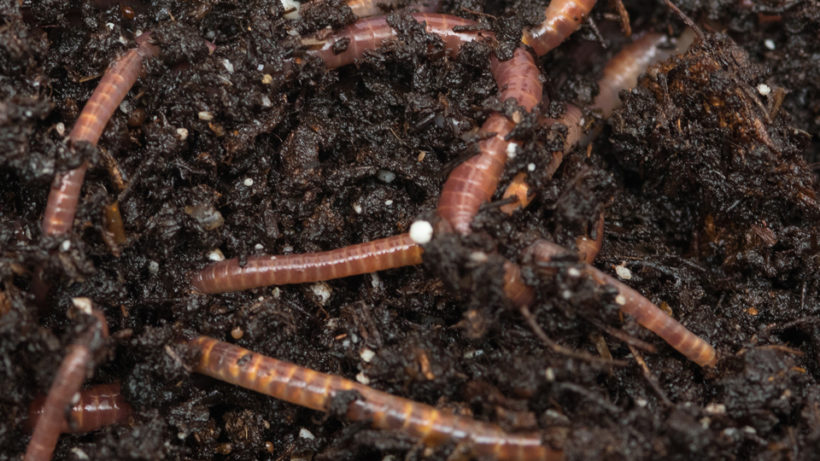
The worms’ penchant for poo-gobbling helped work a minor miracle in Ghana, where poor sanitation contributed to a public health crisis that raged for decades. In 1989, an estimated 179,000 Ghanians suffered from dracunculiasis, a disease borne by parasitic Guinea worms.
Guinea worms’ larvae thrive inside water fleas that inhabit pools of contaminated water. People who drink the water ingest the larvae as they ingest the fleas. The larvae then grow into adult worms, 1 to 2 mm in diameter and up to 80 cm (31 inches!) long.
After a year of burrowing through their unfortunate hosts’ bodies, they slowly bore their way out. The best way to get rid of them is to wind them up on sticks as they crawl out, a process that take weeks. Pain from the wound can persist for months.
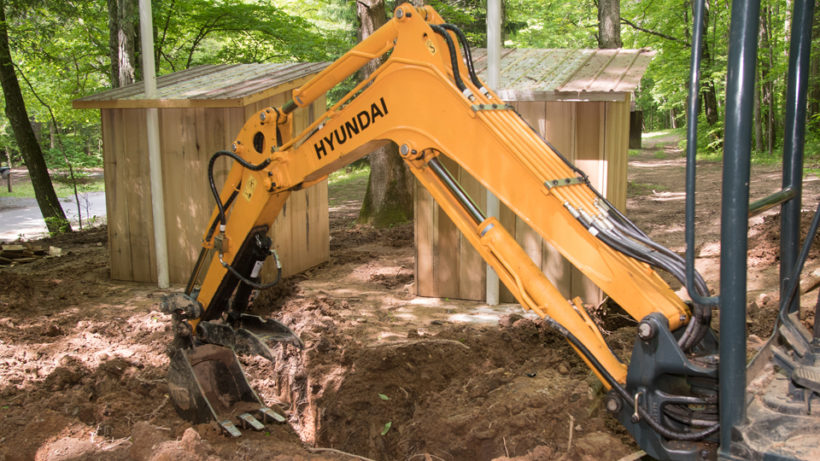
In 2009, workers for the Global Sustainable Aid Project (GSAP) began teaching Ghanians how to build microflush toilets. The privies, each built to process the wastes from two to three families, prevented sewage from contaminating water supplies. In 2015, officials from the World Health Organization certified that dracunculiasis had been eradicated within the country.
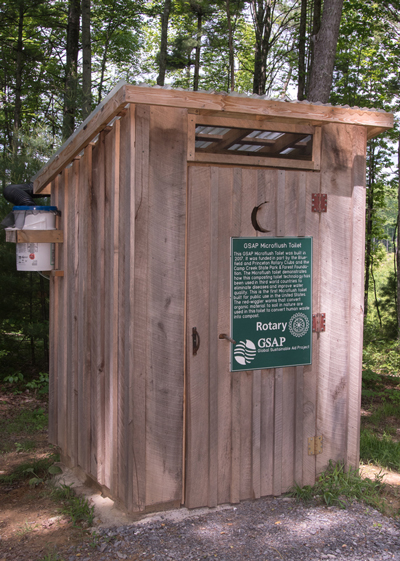
Red-wiggler technology made the jump from Africa to West Virginia in 2016, when a park visitor complained about a particularly foul-smelling Port-a-John. The man was a local member of Rotary International, which had worked with GSAP to bring microflush privies to Ghana.
“He said what we really needed was one of the toilets they helped build there,” says superintendent Ratcliffe.
Two local Rotary Clubs teamed up with GSAP and the park’s foundation to build that first outhouse. Ratcliffe says it was the first use of microflush technology for public use in the United States.
Completed in 2017, with a translucent roof and a cistern to collect rainwater for hand-washing and flushing, the bright, airy outhouse cost just $700 to construct. Visitors loved it so much Ratcliffe decided to build two more. State officials now want to extend red-wiggler technology into other parks, particularly in rustic camping areas.
“They’ll eliminate old-fashioned earthen pit toilets, the flies and the smell,” Ratcliffe says. “They’re a very clean, very neat solution to a long-time problem.”
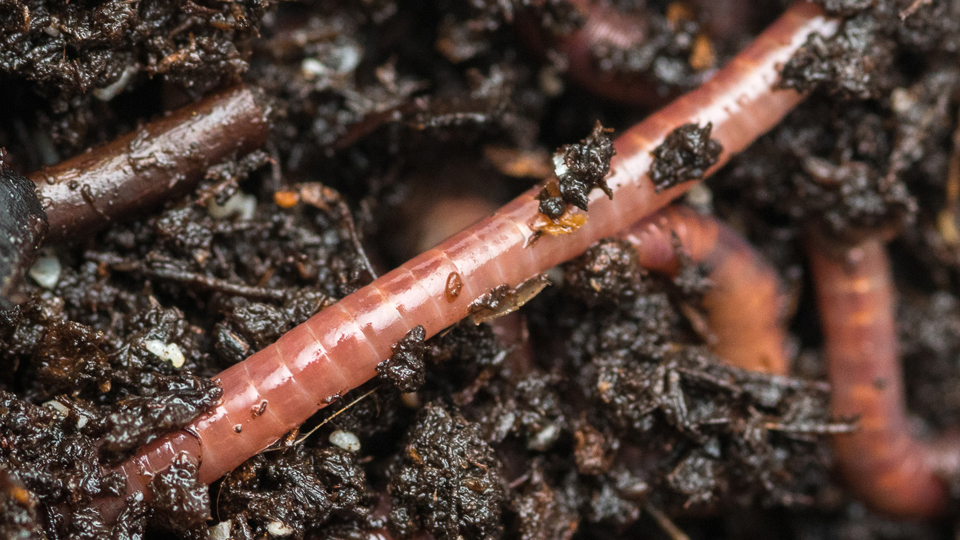



Will these be successful in drier climates?
All this dear world of ours needs is Good Ideas and this certainly is one of them!
What about the older idea that it’s not OK to use composted feces on food crops? I’ve heard that worms in composting bins, for example, can’t stand the high heat required to burn up pathogens. Your article mentions “used in gardens.” That would have been a good place to touch on that topic.
I’m all for composting and gardening, by the way. If that old idea about disease being spread through feces, applies only to raw sewage, and not to what’s produced by composting piles, composting toilets, or the microflush toilets mentioned, people definitely need to have that spelled out.
Thanks for listening.
These types of toilets need to built in every campground/picnic area where there are now standard-issue pit toilets that need to be pumped!!
It seems to me to be a very good idea, having used more than a few stinky park outhouses.
It seems it could also be modified to meet the needs of homeless populations. A few of those on public property would help resolve one large problem of the homeless not having enough resources to toilets.
Just raise the door to discourage sleeping in the outhouse, and the cost is pennies to the urban toilets cost that can cost thousands. Plus the compost would be good for the parks.
Great idea. Wish they would use it everywhere as I have been in some stinking toilets
What wonderful technology! I suggest they be used all over the world, especially in wildlife preserves where pit toilets are the norm.
The end product of the worm composting is humus, not topsoil.
I love this article. I have a 2bed/2 bath home, but when I have family visiting, we always wish we had one more WC for emergencies! It seems a no brainer to have a set-up like this out in my garden shed, which is on a hill leading down to a canyon (uninhabited except for wood rats and deer and such), with plenty of room for its own mini septic field and worms.
I’m in coastal California, with rarely a frost and never a freeze, (especially with climate warming) so I think the worms would love their new home.
Will this system be available commercially some day? I think the only drawback would be that I might not have enough “food” for the worms when no visitors are here, but maybe they’d double as composters of food.
AND–the local water police could hardly object to an 8 ounce flusher!
Havw these composting toilets been adapted fir use in homes and, if so, how can one one purchase and install one?
Fabulous idea to preserve water and replenush soils.
If you contact me via my email or website mavisinstitute.xyz I work with the parks, and with the founder to help get these approved throughout the USA
Fantastic idea and execution: let’s bring this solution to the challenge of US pig farms!
Excellent idea they should install them in all primitive campgrounds across the country.
so where does this fit in to the scheme of things https://www.dnr.state.mn.us/invasives/terrestrialanimals/earthworms/index.html
I agree with you Penny. This is a bad idea! I have personally seen the devastation done by non-native invasive earthworms on the forest ecosystem in Minnesota. Somehow invasive earthworms seem to get a free pass with many people.
FYI Red Wigglers worms are native to North America. If you live in a area where these worms are not native you could use a native worm to perform the same job. Think of it this way, the worms in your compost bin, are idea for this project.
-Justyn ( GSAP Certified Maker)
I’ve have personally been involved in the building of 6 of these toilets.
I might consider going camping again! ?
If this technology works as well as described it could be a big help to the problem of national, state and local park sanitation and directly lead to a resurgence of family camping.